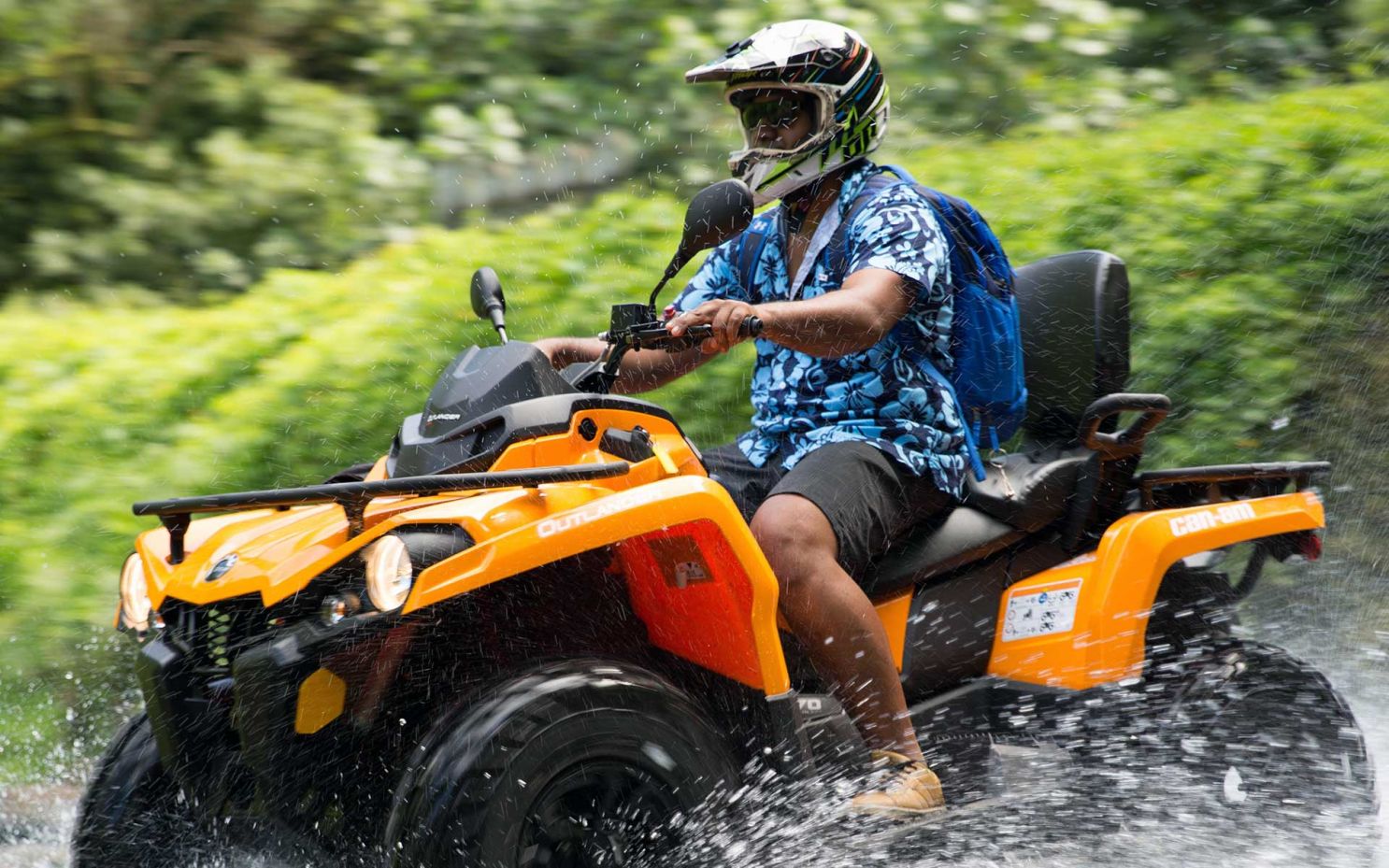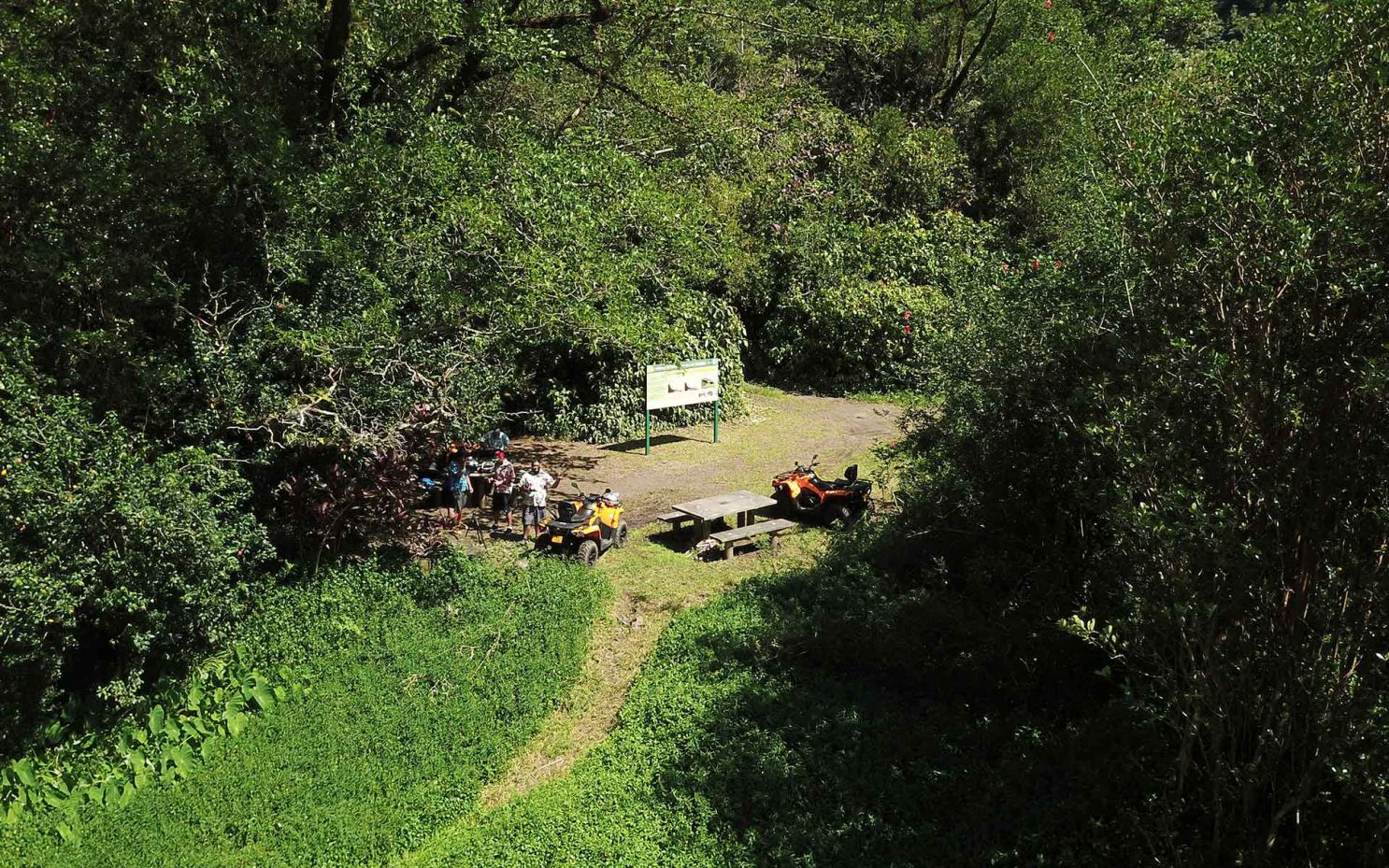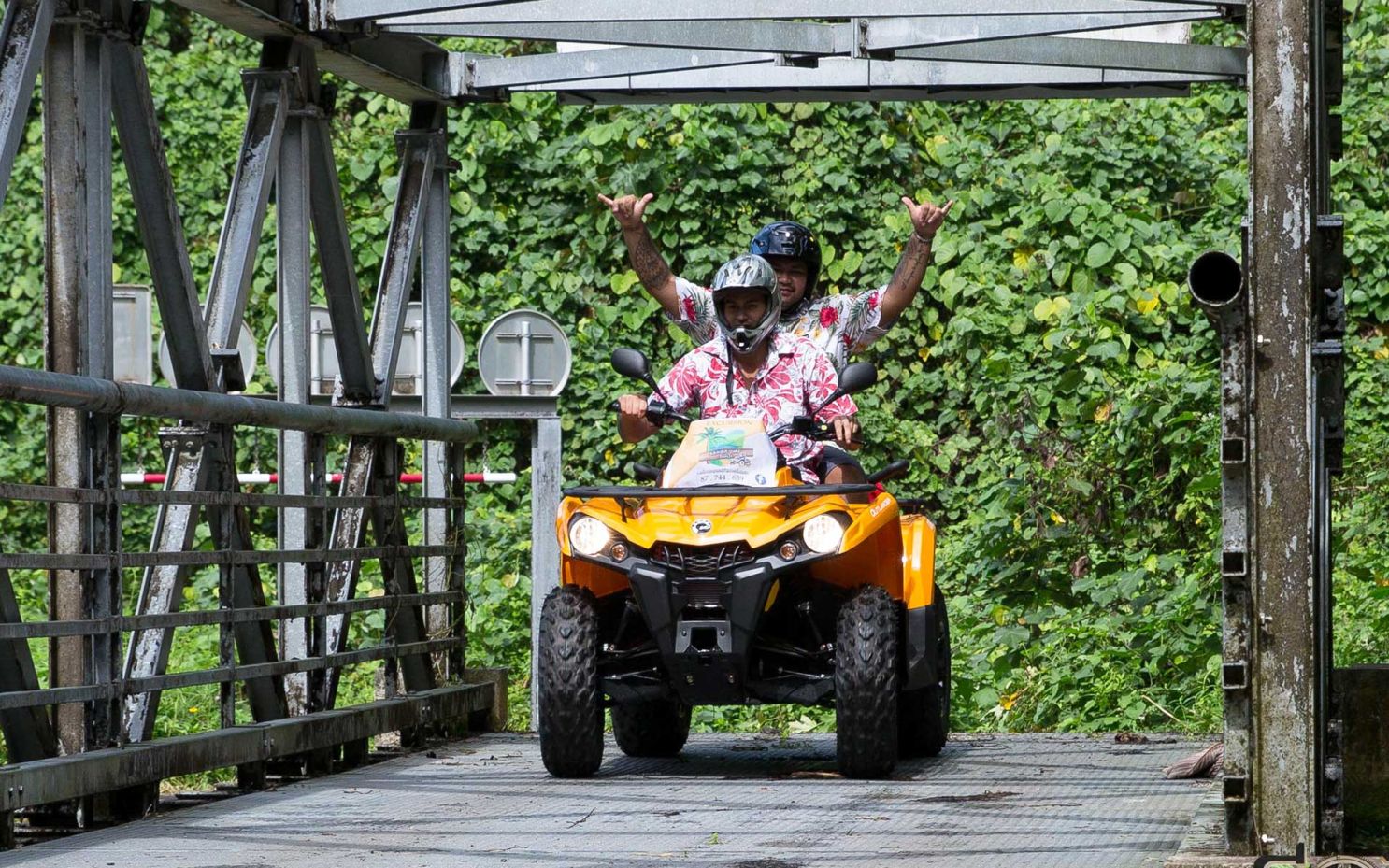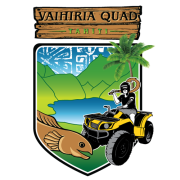
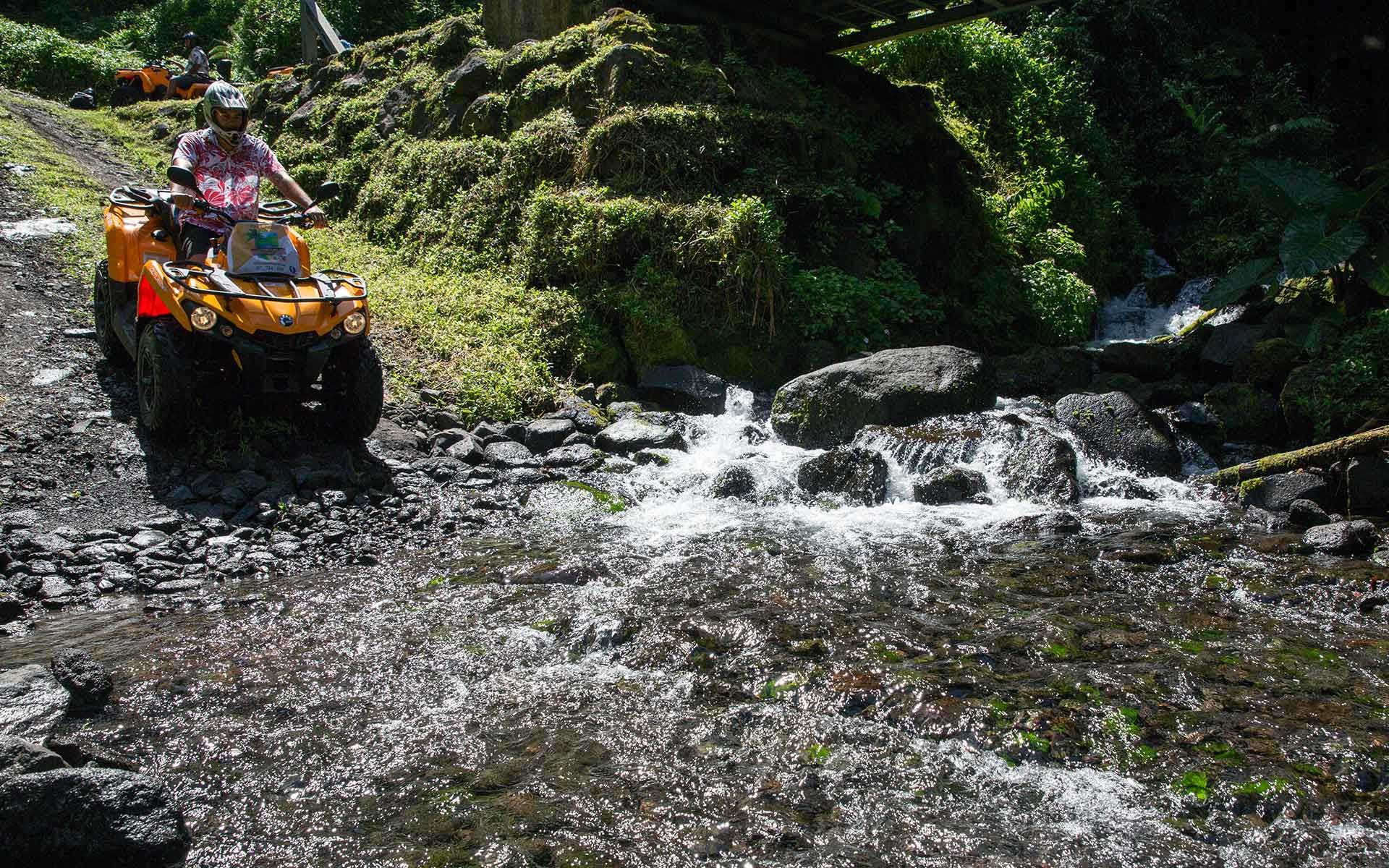
Morning
& Afternoon
From Wednesday to Friday
Discover an unforgettable experience in the heart of the island of Tahiti riding our ATVs, through road, trail and river crossing.
A pure moment of escape and dazzle on this legendary journey. Lovers of biodiversity, nature and legend, do not hesitate any more: COME DISCOVER: Lake Vaihiria, the blue lake, the waterfalls, the legends and the history of our beautiful valley ...
A pure moment of escape and dazzle on this legendary journey. Lovers of biodiversity, nature and legend, do not hesitate any more: COME DISCOVER: Lake Vaihiria, the blue lake, the waterfalls, the legends and the history of our beautiful valley ...

Heiata
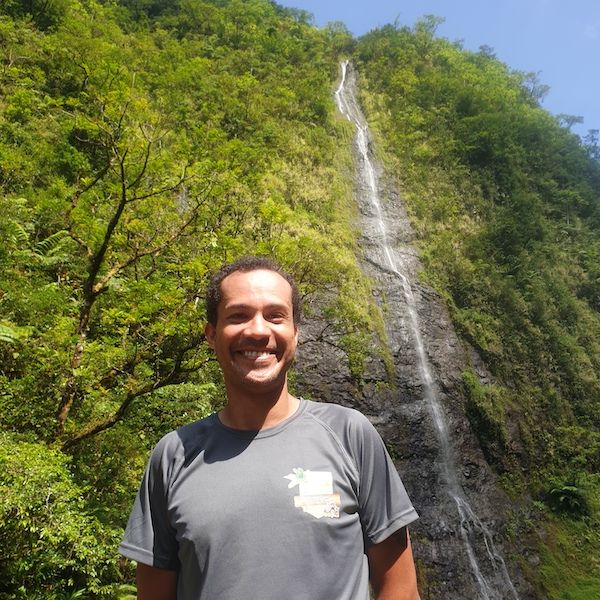
Temoe
At your service
A young and dynamic team to help you discover the island of Tahiti and its hidden secrets
Lake
Vaihiria
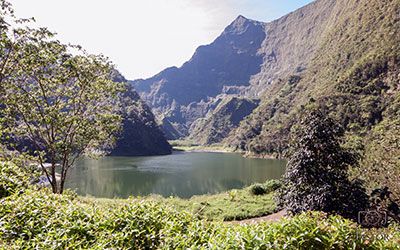
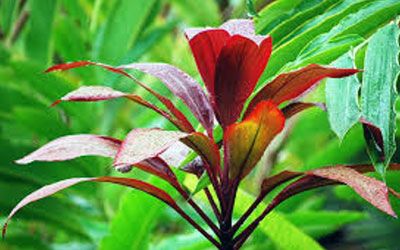
Lake VAIHIRIA TAHITI
Lake Vaihiria is located in the heart of Tahiti and is a must for lovers of nature crossing Polynesia. In the heart of a lush cocoon of vegetation, this exceptional lake is surrounded by many legends that make it a place with a special atmosphere. In ATV, discover this incredible place.
Lake Vaihiria is the largest lake in Tahiti, at an altitude of 473 meters in the heart of Tahiti Nui, the largest part of the island of Tahiti.
Formation of Lake Vaihiria and evolutions
Lake Vaihiria was formed following the collapse of a mass of land from the sides of the valley of the heart of the island of Tahiti. The lake is linked to the formation of a natural dam that occupies the entire width of the valley for nearly 800 meters, it is called Teraiputo (the sky that stands in the night). The waters of the lake flowed through infiltration and the lake had never threatened the thin natural dam facing it.
Nevertheless in the early 1980s, a hydraulic program broke this natural balance. The lake was used as a hydraulic dam and the valley had to undergo modifications in order to install pipes, turbines and means of access. These developments have irreparably changed the ecosystem of this lake and its balance. In 1998, during torrential rains, the level of the lake rose suddenly and almost overflowed endangering the lives of the inhabitants of the valley who were fortunately able to be evacuated.
Today, it appears that the lake fills up rather quickly, condemning it in the long term. The lake, at its lowest level of the year, is still about 25 meters deep and 400 meters long. When it is in flood, it gains 7 meters of depth and its length almost doubles.
Lake Vaihiria is located in the heart of Tahiti and is a must for lovers of nature crossing Polynesia. In the heart of a lush cocoon of vegetation, this exceptional lake is surrounded by many legends that make it a place with a special atmosphere. In ATV, discover this incredible place.
Lake Vaihiria is the largest lake in Tahiti, at an altitude of 473 meters in the heart of Tahiti Nui, the largest part of the island of Tahiti.
Formation of Lake Vaihiria and evolutions
Lake Vaihiria was formed following the collapse of a mass of land from the sides of the valley of the heart of the island of Tahiti. The lake is linked to the formation of a natural dam that occupies the entire width of the valley for nearly 800 meters, it is called Teraiputo (the sky that stands in the night). The waters of the lake flowed through infiltration and the lake had never threatened the thin natural dam facing it.
Nevertheless in the early 1980s, a hydraulic program broke this natural balance. The lake was used as a hydraulic dam and the valley had to undergo modifications in order to install pipes, turbines and means of access. These developments have irreparably changed the ecosystem of this lake and its balance. In 1998, during torrential rains, the level of the lake rose suddenly and almost overflowed endangering the lives of the inhabitants of the valley who were fortunately able to be evacuated.
Today, it appears that the lake fills up rather quickly, condemning it in the long term. The lake, at its lowest level of the year, is still about 25 meters deep and 400 meters long. When it is in flood, it gains 7 meters of depth and its length almost doubles.
Fauna
& Flora
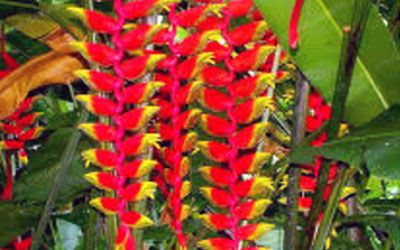
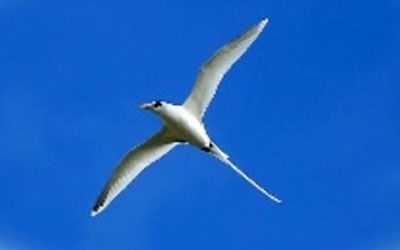
The fauna and the flora
The hiking trail will first follow the river that winds in the heart of Tahiti. Open your eyes because you will be able to admire sublime panoramas. Along the way, you can see various plants: Mape, Fara, Ylang ylang, Verbena, Purau, Auti, Papyrus.
Role of vegetation near rivers
Riparian forests of rivers play an important role:
They participate in the regulation of important fluvial flows (liquid and solid). By receiving large quantities of water during floods, they slow down the flood and clog up its maximum.
These forests can also serve as a temporary reservoir capable of storing excess water that the river can not evacuate in the moment.
The fundamental role of the root system of large trees, such as the Mape, is also to protect the banks from erosion, avoiding ice jams, high inputs of suspended matter in the stream.
The hunting and hunting function for wildlife (shelter, water source, corridor between forest areas, corbelling for fish and goats), especially for many protected birds (Green Pigeon, Martin hunter, yellow-billed phaeton (petea) , carpophage of the society (rupe) ...) and the flora (species specific to this type of environment, example: the protected fern Lindsaea tetragona) is also essential.
You will also come across many so-called miconia plants that look like turtle shells because of their bulging and ribbed appearance, as well as the Tulip trees of Gabon (Piss piss), the falcatas, the parasol trees. Collect them as much as you like, although these plants are beautiful, they parasitize the endemic ecosystem of the island and campaigns of destruction are regularly organized.
Lake Vaihiria is located in lush greenery and is surrounded by impressive mountains rising to more than 1700m. These green mountains are reflected in Lake Vaihiria, the show is all the more beautiful. The lake is home to many eels with ears that differ from other eels in the lakes of the island. Near Lake Vaihiria, there is the cascade of Fautaua.
The hiking trail will first follow the river that winds in the heart of Tahiti. Open your eyes because you will be able to admire sublime panoramas. Along the way, you can see various plants: Mape, Fara, Ylang ylang, Verbena, Purau, Auti, Papyrus.
Role of vegetation near rivers
Riparian forests of rivers play an important role:
They participate in the regulation of important fluvial flows (liquid and solid). By receiving large quantities of water during floods, they slow down the flood and clog up its maximum.
These forests can also serve as a temporary reservoir capable of storing excess water that the river can not evacuate in the moment.
The fundamental role of the root system of large trees, such as the Mape, is also to protect the banks from erosion, avoiding ice jams, high inputs of suspended matter in the stream.
The hunting and hunting function for wildlife (shelter, water source, corridor between forest areas, corbelling for fish and goats), especially for many protected birds (Green Pigeon, Martin hunter, yellow-billed phaeton (petea) , carpophage of the society (rupe) ...) and the flora (species specific to this type of environment, example: the protected fern Lindsaea tetragona) is also essential.
You will also come across many so-called miconia plants that look like turtle shells because of their bulging and ribbed appearance, as well as the Tulip trees of Gabon (Piss piss), the falcatas, the parasol trees. Collect them as much as you like, although these plants are beautiful, they parasitize the endemic ecosystem of the island and campaigns of destruction are regularly organized.
Lake Vaihiria is located in lush greenery and is surrounded by impressive mountains rising to more than 1700m. These green mountains are reflected in Lake Vaihiria, the show is all the more beautiful. The lake is home to many eels with ears that differ from other eels in the lakes of the island. Near Lake Vaihiria, there is the cascade of Fautaua.
Legends
& Stories


Legends and stories
The name of Lake Vaihiria would come either from "vaihirea" which means "mysterious water" or "vaihirere" whose meaning is "water that springs and runs". Nobody knows which of these interpretations is accurate. Lake Vaihiria has seen many historic stages follow one another, and this is where the mutineers of the Bounty found refuge in 1791 when the Europeans returned to find them after their flight.
Lake Vaihiria is particularly famous and the tradition combines many legends, the best known is undoubtedly that of Hina and coconut.
This legend tells the story of Princess Hina who was promised to Prince Faaravaainanuu. Nevertheless, when she met him it was stupor because the prince was actually a huge eel. The young princess flees but the prince ends up finding her.
The princess was helped by two powerful tiki who managed to subdue the eel, cut it into three pieces and turned her head to Hina, telling her not to put her head on the floor until she arrived home. This head should allow him to drink and eat.
Hina left but finally put the package on the ground much too soon. A plant appeared and began to grow ... the first coconut tree was born.
Hina understood that she had to stay with this new wealth whose fruits did bring her to drink and eat. On these fruits, appear three dark spots reminiscent of the eyes and mouth of the eel.
So, when Hina drank the coconut water, it was as if she was giving a kiss to the unfortunate prince.
CHANT VAIHIRIA
Viens, je ne te dirais pas je t'aime
C'est tellement dit dans les poèmes
Viens, je ne suis pas un personnage d'une comédie musicale
Vaihiria, Vaihiria
Vaihiria, Vaihere
Viens, mon cœur n'a pas besoin de ton cœur
Viens, l'amour n'est pas dans le journal
Viens, on vendra pas de billet, tu seras seule au récital
Vaihiria, Vaihiria
Vaihiria, Vaihere
Faateniteni teie
No te roto o Vaihiria
E peho rupe rupe teie
Pape no te mau ratere
Vaihiria, Vaihiria
Vaihiria, vaihere
The name of Lake Vaihiria would come either from "vaihirea" which means "mysterious water" or "vaihirere" whose meaning is "water that springs and runs". Nobody knows which of these interpretations is accurate. Lake Vaihiria has seen many historic stages follow one another, and this is where the mutineers of the Bounty found refuge in 1791 when the Europeans returned to find them after their flight.
Lake Vaihiria is particularly famous and the tradition combines many legends, the best known is undoubtedly that of Hina and coconut.
This legend tells the story of Princess Hina who was promised to Prince Faaravaainanuu. Nevertheless, when she met him it was stupor because the prince was actually a huge eel. The young princess flees but the prince ends up finding her.
The princess was helped by two powerful tiki who managed to subdue the eel, cut it into three pieces and turned her head to Hina, telling her not to put her head on the floor until she arrived home. This head should allow him to drink and eat.
Hina left but finally put the package on the ground much too soon. A plant appeared and began to grow ... the first coconut tree was born.
Hina understood that she had to stay with this new wealth whose fruits did bring her to drink and eat. On these fruits, appear three dark spots reminiscent of the eyes and mouth of the eel.
So, when Hina drank the coconut water, it was as if she was giving a kiss to the unfortunate prince.
CHANT VAIHIRIA
Viens, je ne te dirais pas je t'aime
C'est tellement dit dans les poèmes
Viens, je ne suis pas un personnage d'une comédie musicale
Vaihiria, Vaihiria
Vaihiria, Vaihere
Viens, mon cœur n'a pas besoin de ton cœur
Viens, l'amour n'est pas dans le journal
Viens, on vendra pas de billet, tu seras seule au récital
Vaihiria, Vaihiria
Vaihiria, Vaihere
Faateniteni teie
No te roto o Vaihiria
E peho rupe rupe teie
Pape no te mau ratere
Vaihiria, Vaihiria
Vaihiria, vaihere

